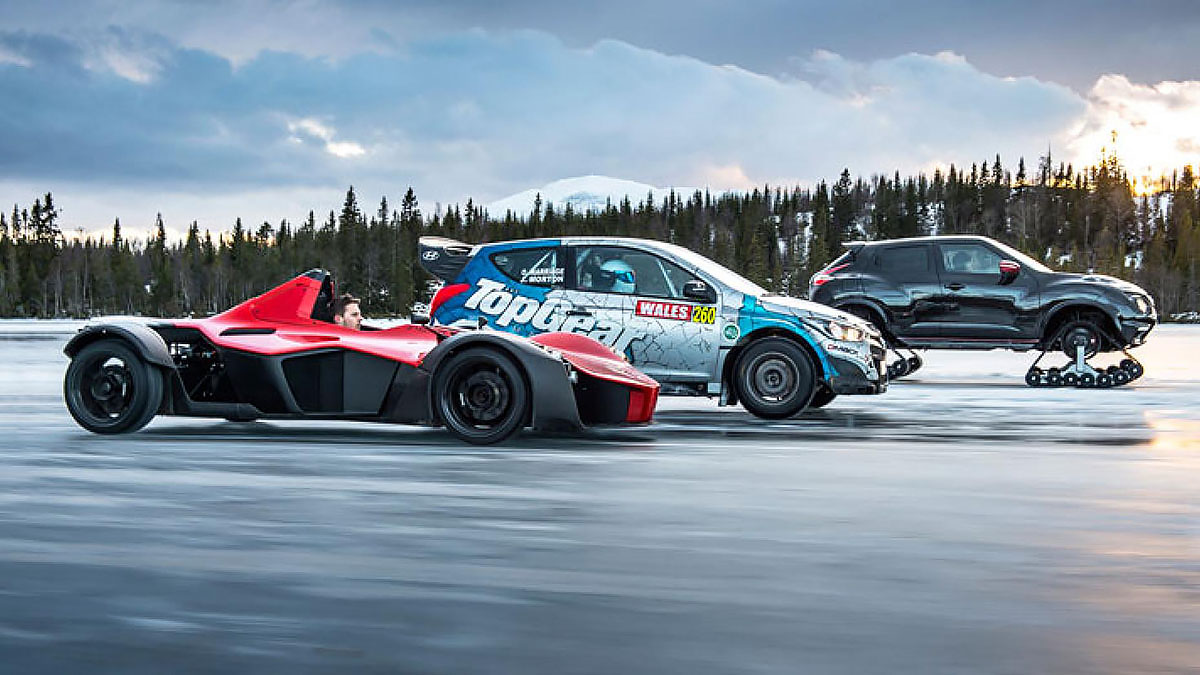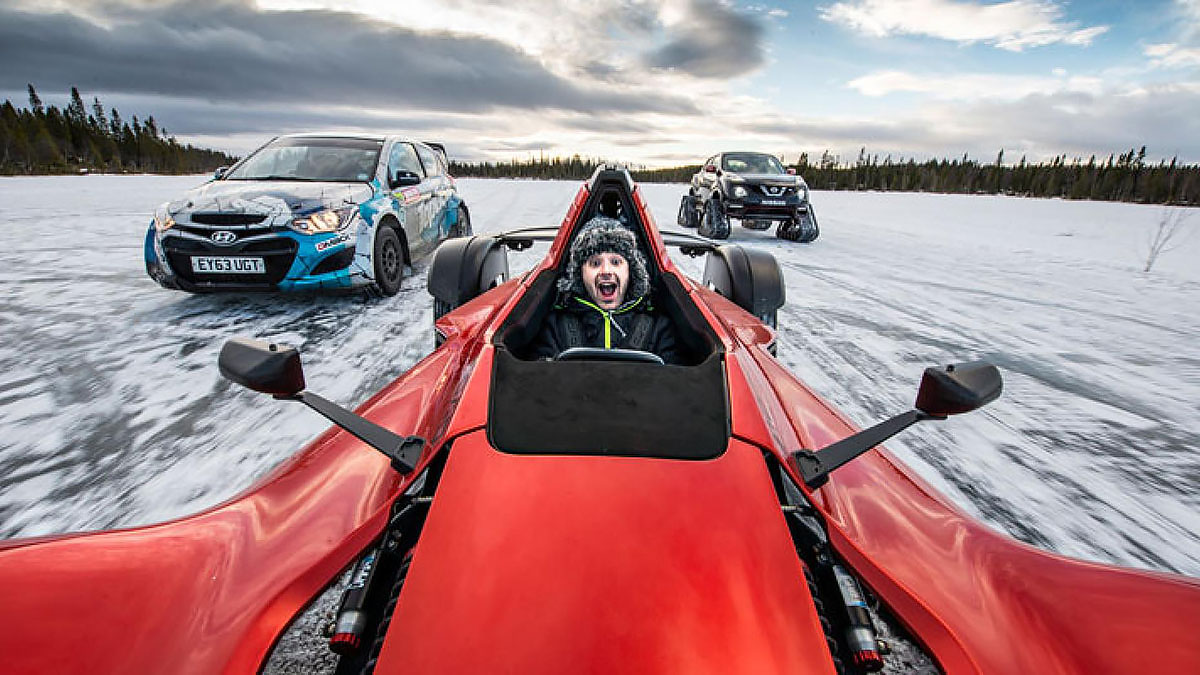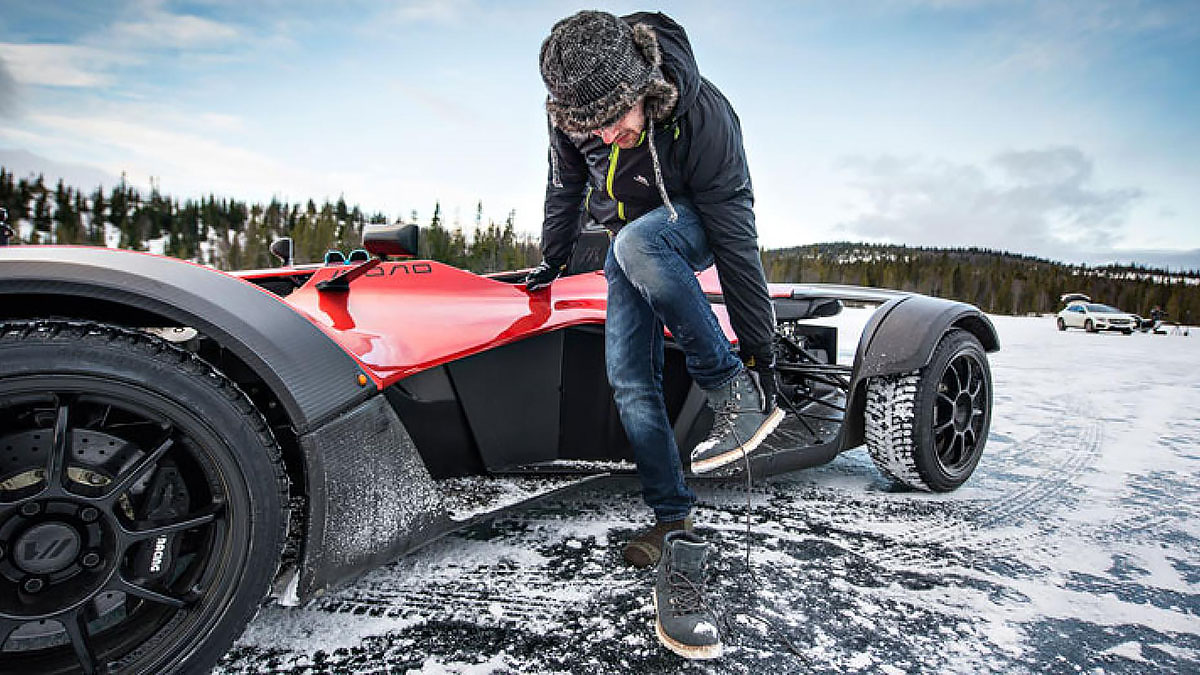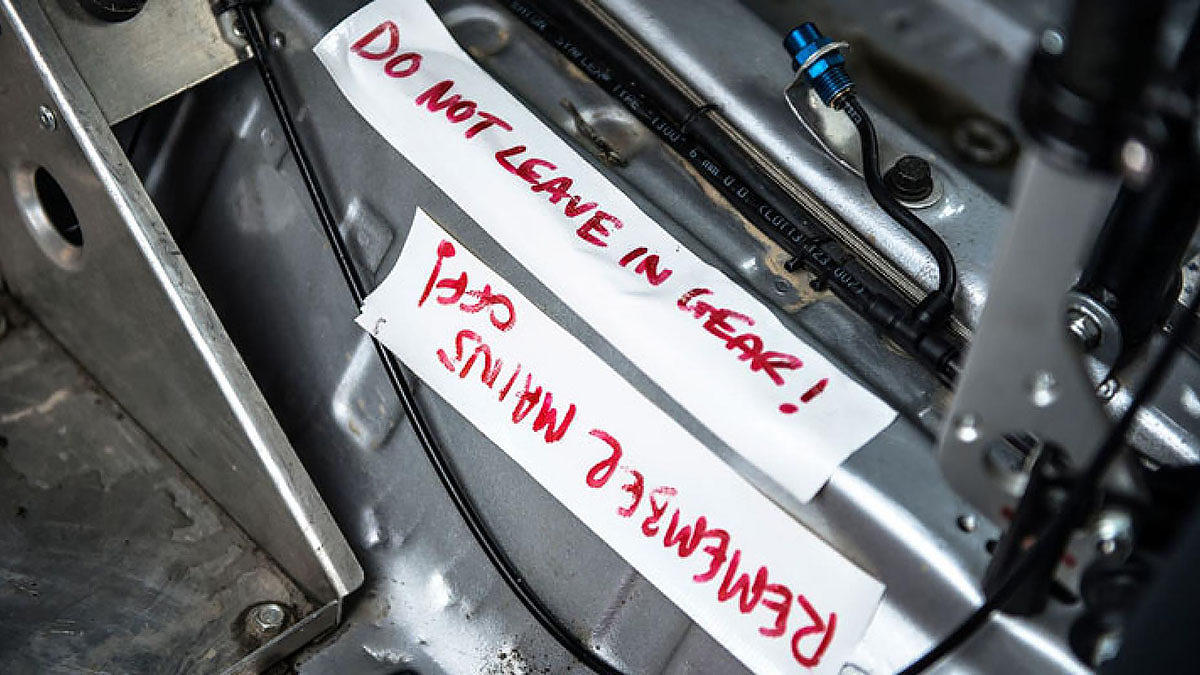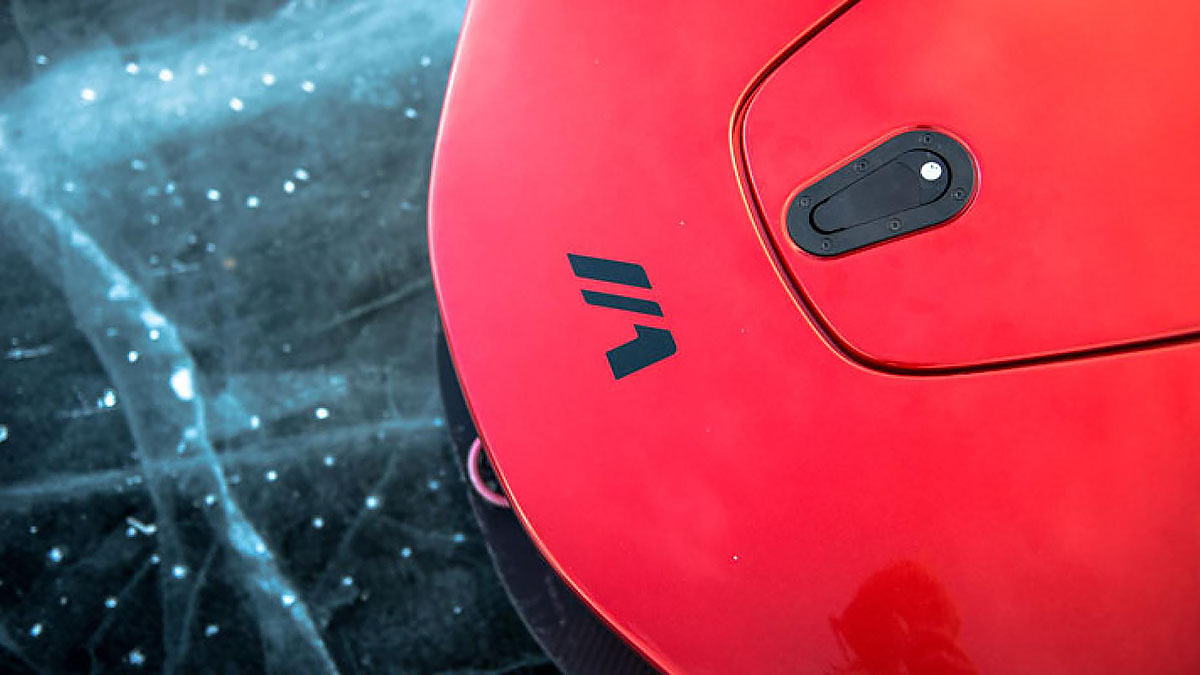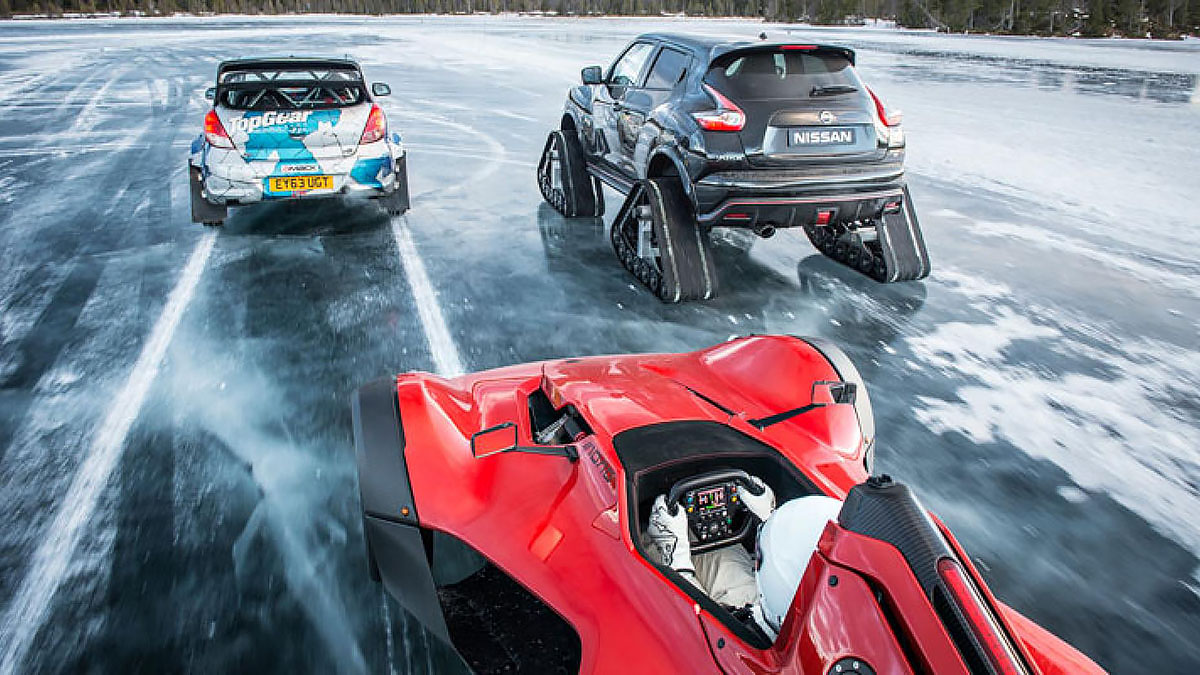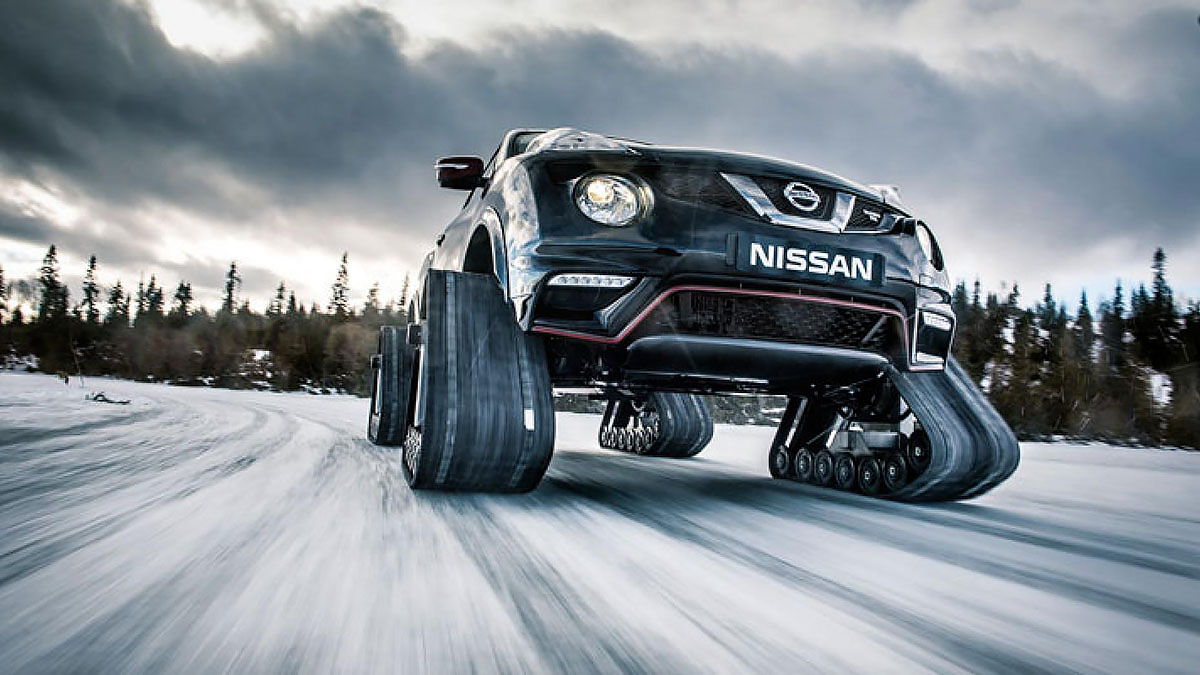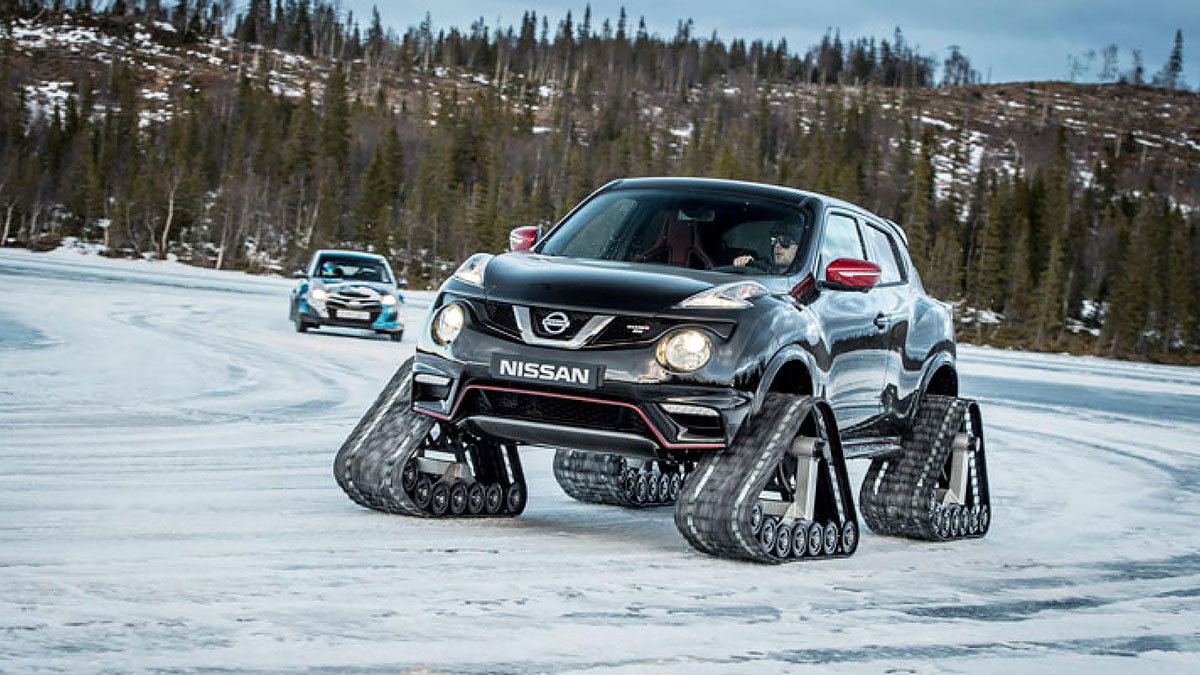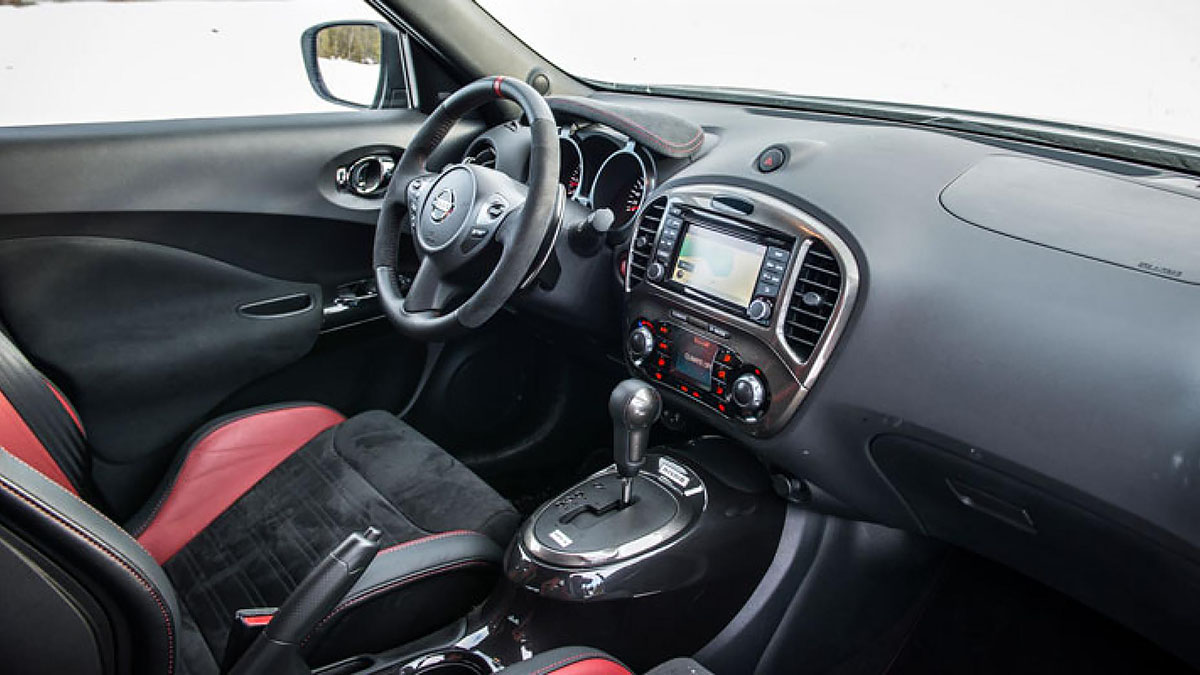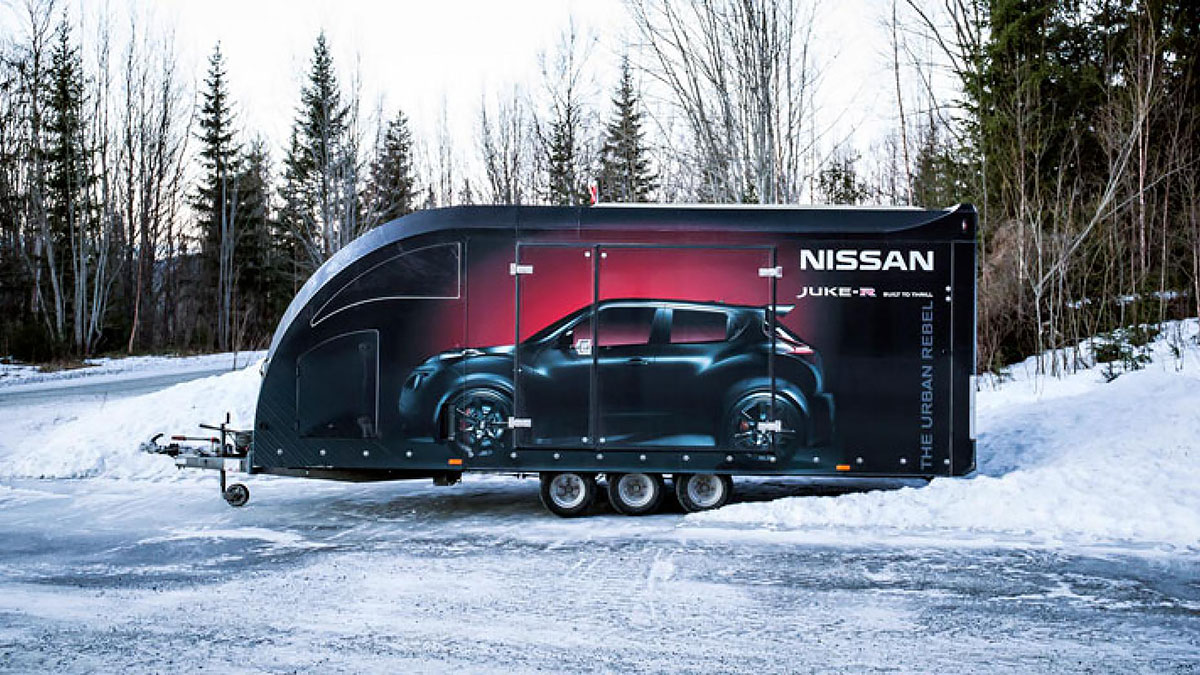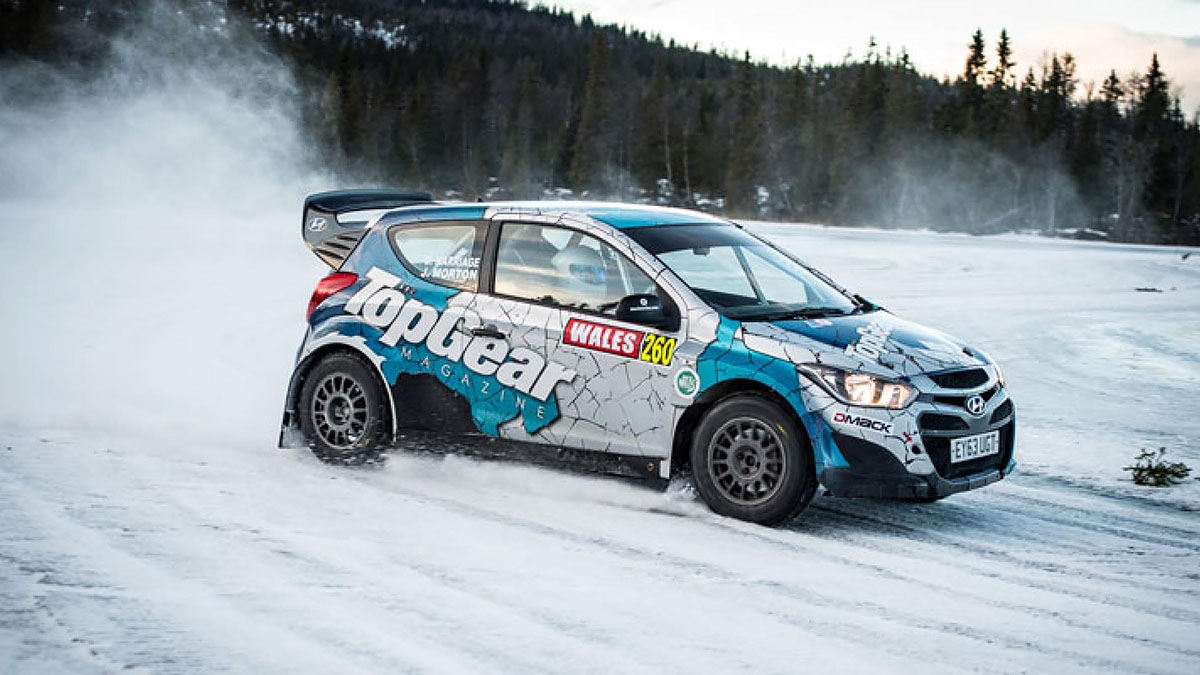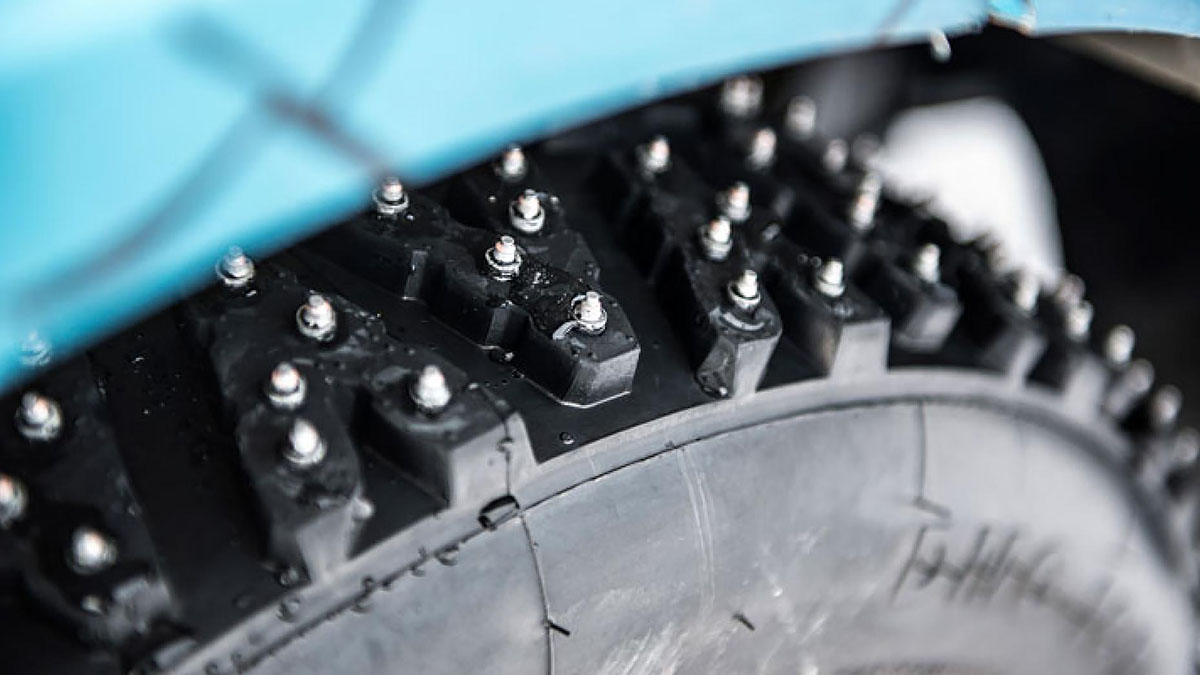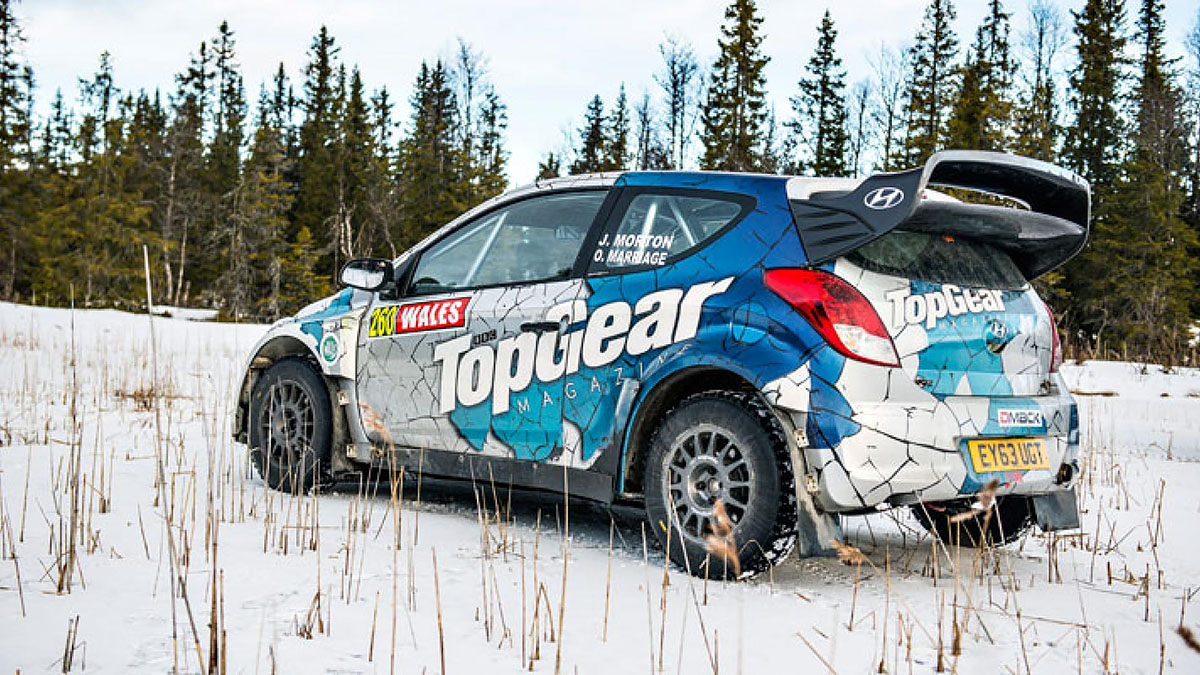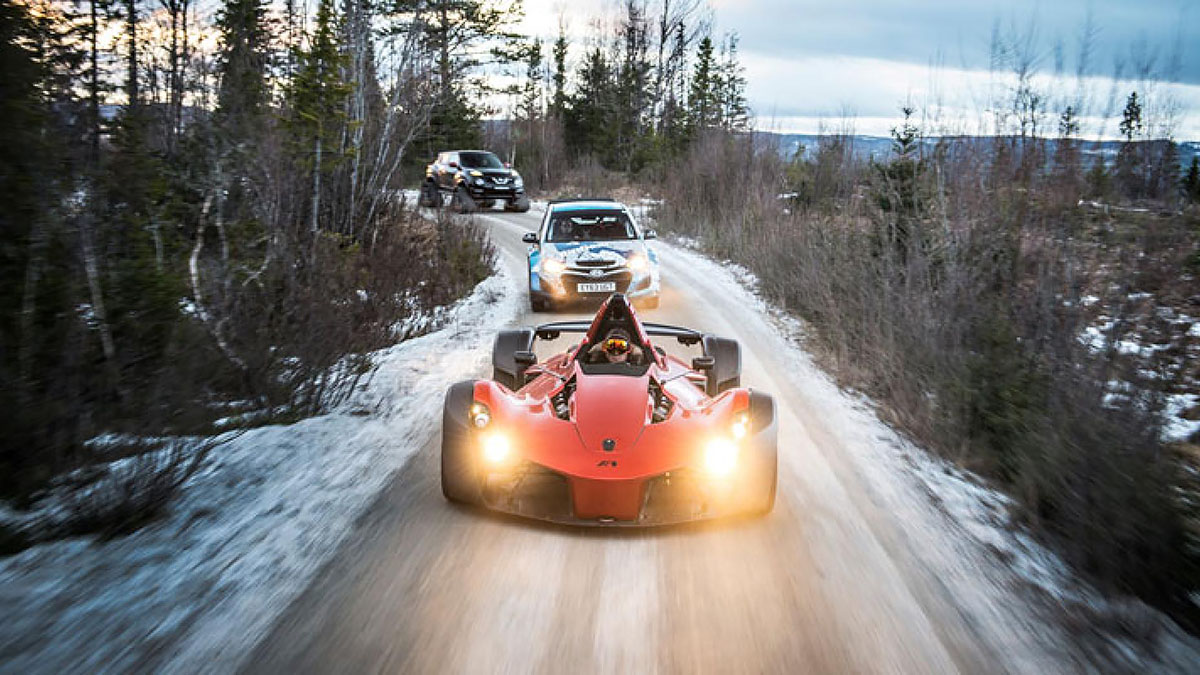TG on ice: BAC Mono vs the oddballs
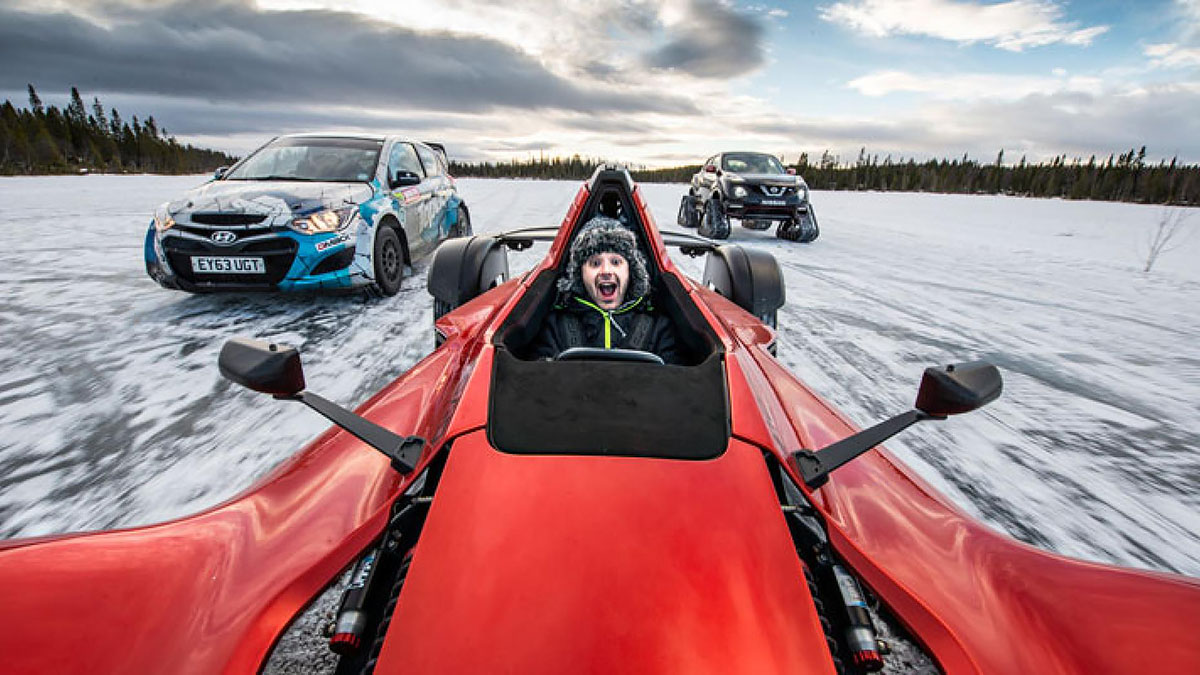
My colleagues have done it the easy way: heated seats and clever AWD systems have seen them slither balletically around TopGear’s Ice Extravaganza and emerge looking like they’ve spent the day in the sauna. I, however, have a bunch of cars shorn of such fripperies as heaters, roofs and, er, wheels. I need gumption. And, apparently, borderline frostbite.
I’d expected metaphorical cold feet. When my first taste of BAC’s crackpot Mono - singular in its hardcore focus and seating arrangement - coincides with my first-ever wheeled foray on a frozen lake, I think some wary lightness at the pit of my stomach is forgivable. What I hadn’t bargained for were literal cold feet.
If they were warmer I’d kick myself: obviously when you have a slimline sports car with an F1-aping cabin, its pedals will be tiny-wee and quite cosy with one another. After an exploratory prod into the footwell in clumpy, winter-biased boots plunges all three down at once, I decide racing socks are the only answer.
Attempting to de-shoe before said socks stick to Kvarntjärnen’s frozen surface is just the first obstacle of an involved starting routine. Next, I must step over the sills onto the driver’s seat, then shimmy my hips through the Mono’s narrow cockpit aperture before threading my legs towards those newly operable pedals.
I then find myself instinctively perching my arse up to yield better vision, when in actual fact I need to sink right down to the Mono’s floor, so that my legs are horizontal. The submerged driving position is at once brilliant and unsettling, a bit like relaxing in an overly deep carbon-fibre bathtub.

Once the fiddly six-point harness has been clunked into place, it’s time to attach the oblong, very motorsport-vibe steering wheel, before some carefully choreographed declutching and button pressing to awaken the 280bhp Cosworth engine from its slumber. With paddles in place of a gearlever, I must then hold a neutral button while pulling the right paddle to select first. Finally, it’s time to pull away. My feet are bloody freezing by now.
That may sound fantastically faffy, but it’s a welcome focus away from any nerves. A Mono on an ice lake - surely no one’s been sufficiently short of marbles to do this before? Somewhat against expectation, it takes seven corners for me to pirouette into the light powder surroundings. That may be testament to some scaredy-cat pussyfooting around grip limits cataclysmically lower than BAC’s on-tarmac boasts, but given an, ahem, unconventional tyre layout of studs front and winters rear, and the fact the engine’s solid-mount set-up rattles my eyeballs, I commend myself nonetheless.
So what’s it like, a hardcore track car on ice? All-consuming. The front wheels do exactly as I tell them, but on ice like this, precisely no corners can be taken without a lick of oversteer, be it small and spiky or large and potentially spinny. Like the sound of fourth-gear wheelspin at 18mph? It’s here all day. The trick, more so than any car we’ve hauled here, is to be lightning-quick with your reactions. And opposite lock is an unusual thing to administer in the Mono; multiple wheel twirling is stymied by my arms colliding with the cockpit’s collar, while the unconventional shape occasionally scrambles my bearings. Cutting big drifts is out of the question.
The best approach, cocksure and showboaty it may seem, is to use just one hand, doubling the feel my left hand receives from the alien track surface while ensuring I keep an eye on dead-centre. And, at the relatively lowly speeds I’m playing with here, there’s enough steering lock to be managing lots of micro slides. Though I’ll admit some end up being unintentionally macro. I never reach a point where I feel fully on top of things, but I have one heck of a good time trying to get there. Flicking through the pneumatic Hewland sequential gearbox is a constant delight, the 2.3-litre alive with the sounds and smells synonymous with a British industry circuit special. It’s just an exceedingly foreign place for my senses to soak them up.
‘Foreign’ is one of many words I could use to describe the Juke Nismo RSnow my shoes have been kept warm in. It seems the natural car to (literally) hop to next. That’s if ‘car’ is the right word, of course.
At its very core this is a regular Nismo RS, the latest, 211bhp incarnation of Nissan’s angriest Juke, albeit its 4WD iteration, with a CVT ‘box and torque-vectoring in place of the FWD RS’s six-speed manual and limited-slip diff. The suspension, engine and brakes are all the same, skimmed arches and bumpers the only concession to what sits in place of wheels: tracks. Let’s call it My First Tank.
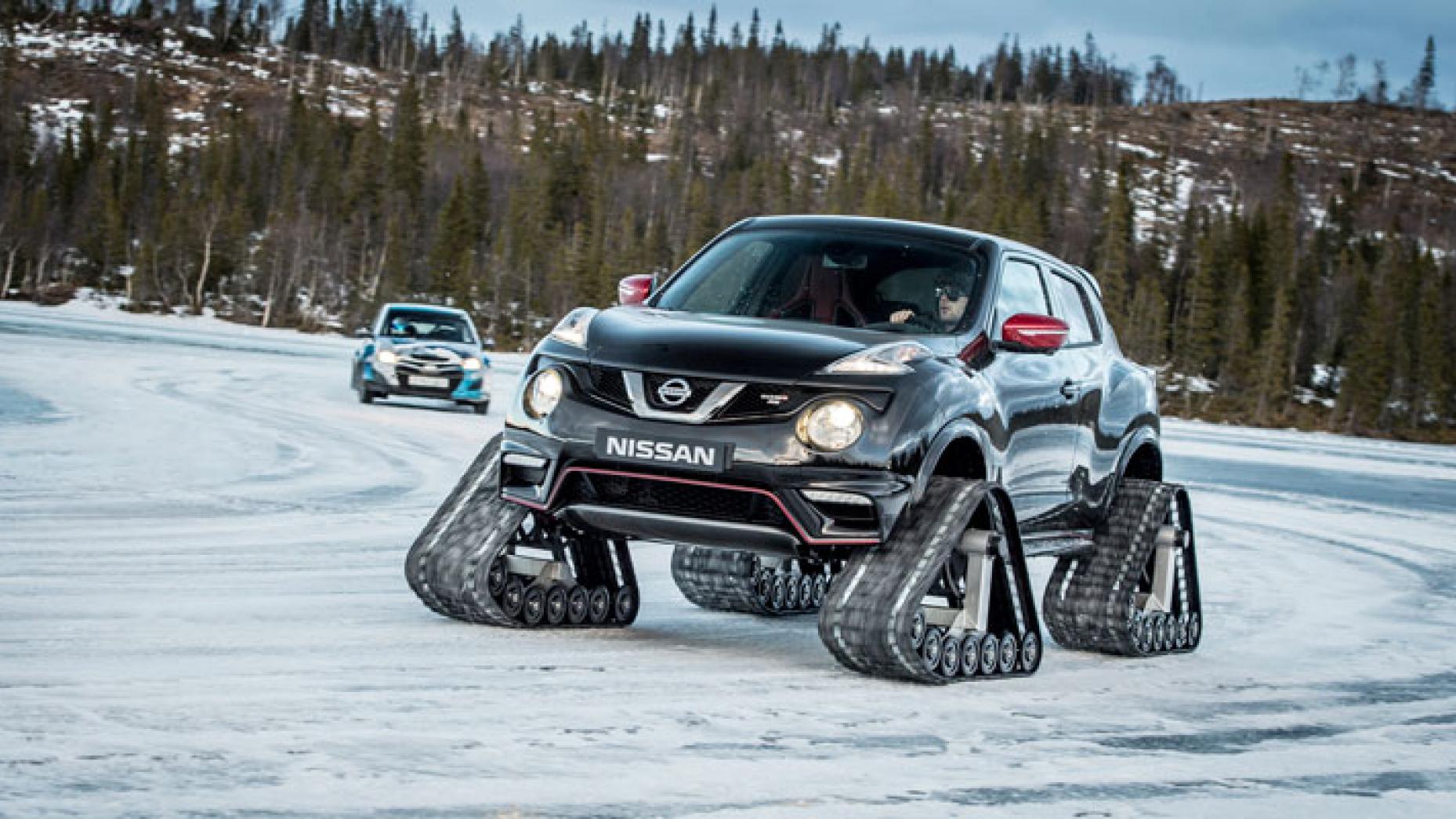
They’re for a one-off PR special rather than official options-list whimsy, sadly, though the Dominator set-up is the work of American Track Truck, which sells such a system aftermarket for around £10,000. For a modification purporting to offer barely impeachable traction, there ain’t half a load of warnings in their instruction manual. “The tracked vehicle should be considered more like a tractor and it should be cautiously operated as such,” one reads. “If this vehicle is out of control it may roll over when some other vehicles may not,” cries another. There’s also a 40mph limit.
I quickly clamber up into its cabin over the outer lip of its Recaro seat. Yep, Recaros in something I’m meant to approach like an agricultural machine. My brain is struggling to keep up, and not because it’s been numbed by the cold of deepest Sweden. But beyond its uncouth entry procedure, getting the Juke going is a doddle. Foot on brake, starter button, transmission into D, handbrake off. It zips off rapidly, with not a millisecond wasted scrabbling for grip like the cars now several feet below me on their paltry ‘tyres’.
Many warning lights are flashing, the electronics clearly miffed about what’s going on at the wheel hubs. I ignore them and carry on. The ride’s bobbly, and grip levels on ice, surprisingly, are no better than with ordinary tyres. Too much surface area. The Nismo’s big problem is lack of steering lock, and just how much speed it sheds when most of that lock is applied through tight corners. As such, it’s awkward to drive, preferring to push on rather than turn, but given this thing could reach the end of the lake and then climb its surrounding banks with a shrug of its shoulders, it’s no panic.

But perhaps that flashing traction-control light isn’t just crying wolf? I press the off switch - a pleasingly easy, split-second job - and first corner, off throttle, stamp on gas, the thing heads straight into a gratuitously silly slide. Involuntary giggling ensues. And so begin half a dozen laps spent barely in a straight line, power to its tracks no longer measured out and the trick torque-vectoring suddenly indulging my immaturity with the most manageable and genuinely laugh-out-loud slides of this entire group. And I’m no longer a slow-moving chicane for the others. That I end my run by veering off circuit for some static photography, effortlessly ascending a bank I can barely stagger up on foot, is just an amusing aside.
Photographer satisfied, it’s time. The time I’ve been stewing over all morning. Having only driven one rally car before - a pig of a MkII Astra - I’ve been approaching my stint in the TG Hyundai i20 with some trepidation. This is, after all, Ollie Marriage’s baby. The one he spent ages modifying before winning his class at Wales Rally GB in it. Make a mistake here, and it’s not just metal I’ve crushed. It’s my colleague’s prized possession.
By the first corner, it’s clear I’ve wasted my morning worrying. It’s not just the friendliest car here today. It’s the friendliest car I’ve ever driven.
Its 7mm studded tyres and Reiger dampers mean I need give no consideration to the surface. Not even the tiniest bit. Drive it gingerly and it’s a little recalcitrant, so the solution - wonderfully - is to drive harder than I dare. Everywhere. Its Veloster-sourced 1.6-litre engine screams in a way far removed from standard. It’s also deliciously torquey in all six of its gears, which are supremely addictive to punch up and down using the elongated sequential selector (the driver end of another gratifying Hewland ‘box), applying a flare of revs to smooth out downchanges and elicit a cocktail of crackles and pops a world away from the artificial histrionics now seen in production cars.

There may be torque, but this is the only FWD car here, so oversteer isn’t top of the menu. The i20 needs provocation, and with the supreme grip of those studs, a cheeky handbrake tug is akin to dropping an anchor. What you need is a lob. A wickedly childish, off-throttle lob, breaking traction at the rear before twirling the wheel as if it’s attached to a Sega Rally machine while reapplying power to get the diff to pull you out of the corner.
It all feels pretty heroic, but in truth this i20 is a forgiving and hugely flattering car. It needs some skill to extract its best, but it then exaggerates that skill and presents it to onlookers before a background of snowy rooster tails.
I only pull into the pits to communicate my admiration for Ollie’s project car to mechanic Pedders via the medium of impish squeaks, before clunking the door shut and jumping back through its ratios and out of the pits. When it’s wrestled from my mitts for hot laps, it’s an understatement to say it whitewashes the competition, its 1m12.3s nearly 11 seconds ahead of the less significantly spiked, though four times as powerful GT-R.
Comfortably the quickest car here, and driven like a yob, among the lairiest. Yet it’s the one car no one spins. No one dares say it until the sun sets on Kall, but this thing feels uncrashable. Though that’s something Ollie quickly points out to the contrary via various battle scars, which only make its impeccably stanced aesthetic all the more appealing. That it drives so much better than it looks is a gushing compliment. Toasty bums and torque-management are superfluous. This is the most fun you can have with your shoes on. Or off.
